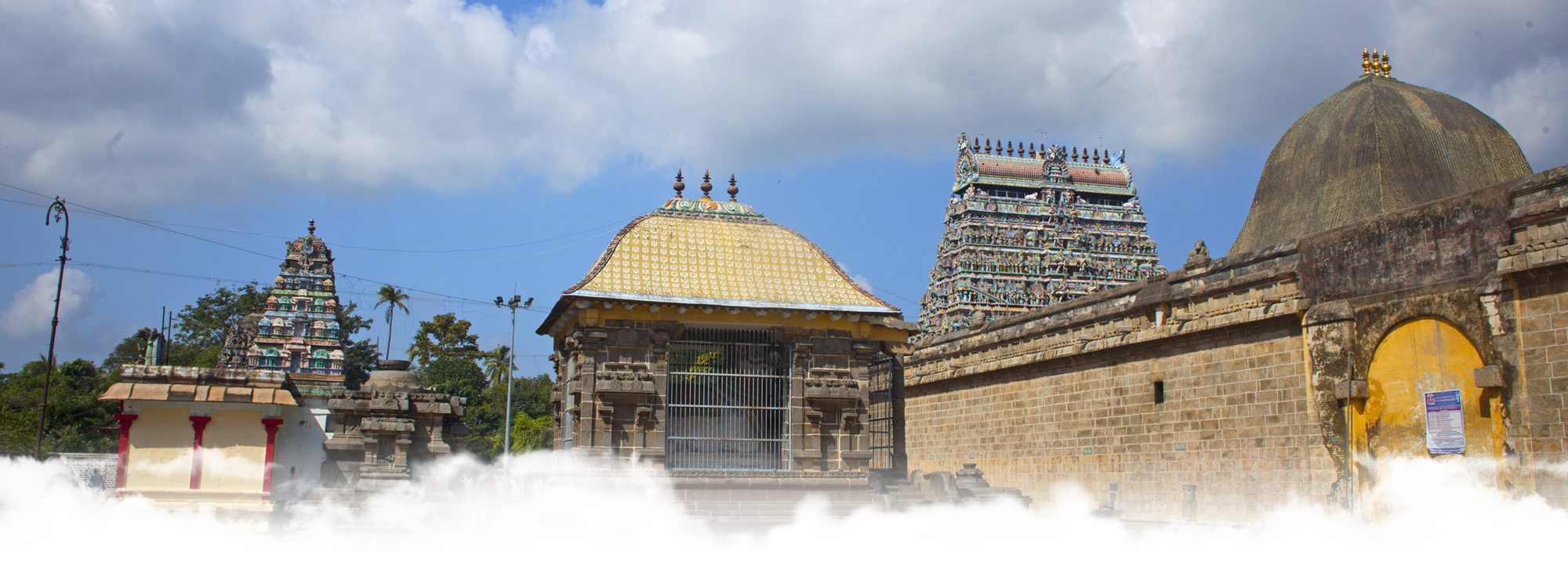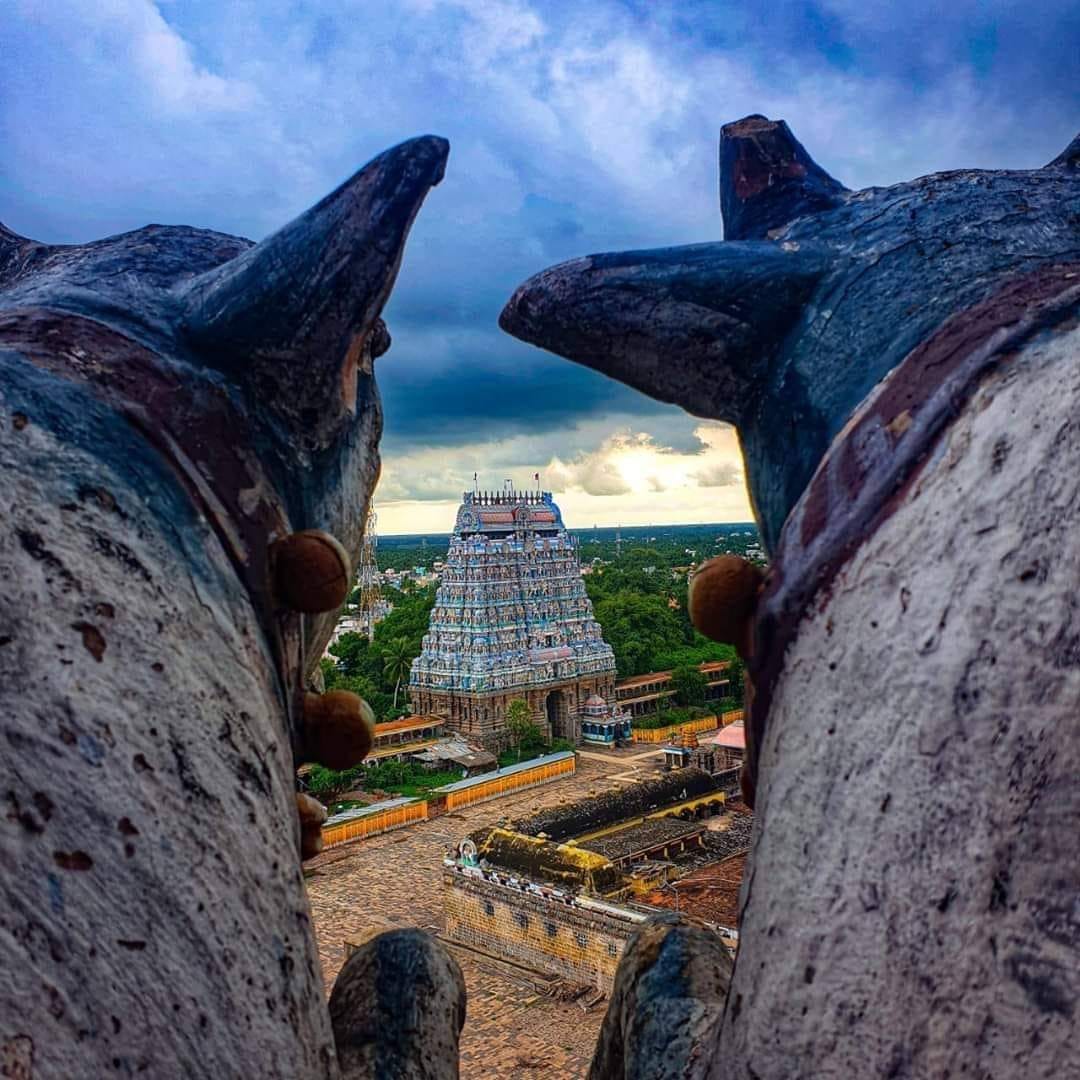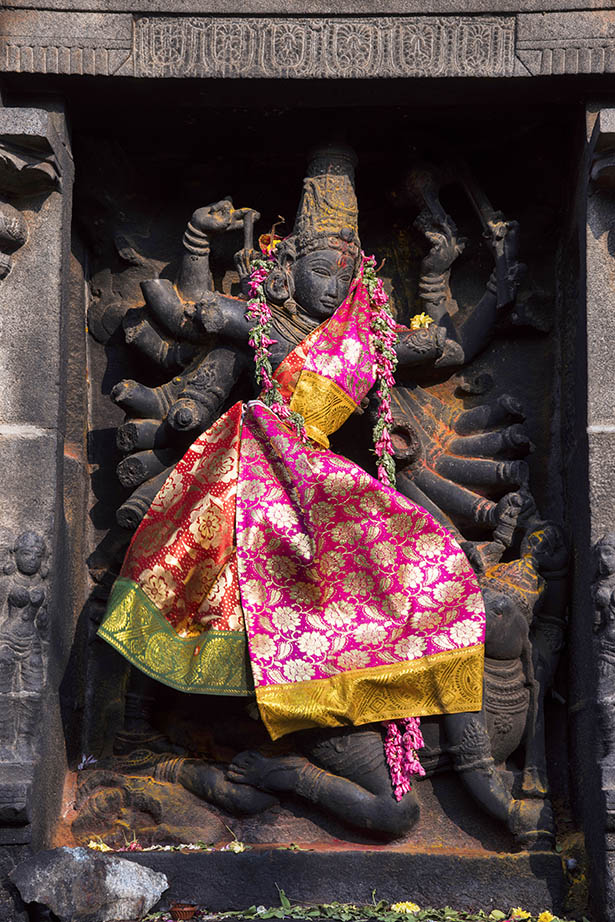
Chidambaram Nataraja: Pancha Bhoota Sthalam
A heritage rich country, India is known for its vast culture and has several centuries-old temples, which are the epitome of the country’s magnificent architecture. Apart from being visually attractive, these sacred places have significant beliefs and history attached to them. Each is associated with unique, mystical facts.
Such are the Pancha Bhoota Sthalams—the five significant temples located in the South Indian states of Tamil Nadu and Andhra Pradesh. Held in reverence for centuries, the presiding deity here is Lord Shiva.
The Indian tradition recognizes that the universe comprises of five cosmic elements—Earth, Water, Fire, Air, and Sky. Therefore the five temples of Pancha Bhoota Sthalam signify the fundamental meaning of life itself. Each dedicated to Lord Shiva represents the manifestation of different five elements of nature.
The five temples are—Thiruvanaikaval Jambukeshwara (water), Kanchipuram Ekambareswarar (earth), Chidambaram Nataraja (sky), Thiruvannamalai Arunachaleshwarar (fire) and Kalahasti Nathar (air).
An introduction about Chidambram Natraja Temple
Chidambaram, a town in Tamil Nadu, claimed fame with one of the holiest temples dedicated to Lord Shiva—Natraja Temple or Thillai Nataraja temple. Lord Shiva manifested himself as the sky (akasha) element at this temple. Here Lord Shiva is worshipped as “Akasha Lingam” to signify that God is divine and beyond human comprehension.
The Nataraja temple is one the rarest since here no customary Lingam, which is worshipped. The main deity is “space”. An idol of Nataraja—Lord Shiva in a cosmic dancer position, is installed in a golden-rooted sanctum sanctorum. Behind the idol is a black screen that signifies the sky.
Nataraja—the Lord of Dance is the symbolic representation of the supreme bliss or “aananda thandavam” in Tamil. Nataraja is considered to be one of the most significant forms of Lord Shiva. Goddess Parvati is worshipped here as the Shakti—“the power of wisdom”.
The sanctum is also known as Ponnambalam or Kanaka Sabha. Lord Shiva’s consort Devi Sivakama Sundari is enshrined to the left of the main sanctum. While two revered saints—Patanjali and Vyagrapada stand guarding the sanctum.

Religious significance of the temple
Revered Saivaites believe that devotees who worship at the Chidambaram Temple are bestowed with ultimate liberation. The name Chidambaram means “Hall of Wisdom” and place of the “Ether of Consciousness”.
As per Hindu mythology, the temple is located at the “Lotus Heart of the Universe”: Virat hridaya padma sthalam. It is the spot where Lord Shiva had once performed his cosmic dance, in a grove of Tillai trees. Hence Lord Shiva is also referred to as “Sabhanayakar” or “Lord of the Stage”.
It is one of the few temples where Lord Nataraja and Lord Govindaraja Perumal—both Shaivite and Vaishnavite deities are enshrined and worshipped in the same place.
Lord Shiva’s Ananda Tandava posture or “Natraja” is highly venerated by many across the world. The sanctum sanctorum houses Lord Nataraja in three forms:
- As "form"—idol of Lord Nataraja, called the “Sakala thirumeni”.
- As "formless-form"—crystal Lingam of Chandramauleswarar, the “Sakala nishkala thirumeni”.
- As "formless"—Akash Lingam in “Chidambara Rahasyam”, the “Nishkala thirumeni”.
Stories behind the temple
A legend of the temple begins with Lord Shiva and his consort Mohini (Lord Vishnu) as strolling into the Thillai forests. These forests were said to be occupied by a group of saints who believed that enchanting ‘mantras’ could control God. The saints and their wives were enchanted by their brilliance and beauty. On seeing their wives enchanted, the enraged saints invoked ‘serpents’ by chanting magical matras. Lord Shiva donned then donned the serpents as ornaments. This enraged the saints further. Next the saints invoked a tiger—whose skin is donned as a shawl by Lord Shiva. The utterly angered saints then gathered all their spiritual strength and invoked a powerful demon that stands as a symbol of arrogance. Lord Shiva then stepped on the demon’s back and performed the Ananda Thaandava (the cosmic dance) thus disclosing his true form. This made the saints realize that this Lord is the truth and is therefore beyond all mantras and rituals.
Another story has it that Aadi Sesha—the serpent god, got to know about the Ananda Thaandava, Lord Shiva’s cosmic dance. Yearning to witness the dance in person, Adi Sesha descended to earth in Thillai forest as Patanjali. Accompanied by another saint—Vyagrapathar, they both started worshipping lord Shiva. Lord Shiva performed his cosmic dance of bliss as Nataraja before them, blessing them with His divine powers.

History of the Temple
The surviving structure of Chidambaram temple traces back to early Chola dynasty during the 10th century when Chidambaram used to be its capital. Although it has ancient history dating back to 3,500 years or more, the more recent part of the temple is around a thousand years old. The present structure of the temple goes back to the 12th and 13th centuries AD. The temple sculptures depicting the Thillai trees, however, date back to the 2nd century CE.
The temple has a history of several damages and renovations by different dynasties, with Viduvelvidugu Perumtaccan being the chief architect for its restoration.
Cholas, Pandyas, Vijayanagara kings, Cheras, and Pallavas made noteworthy contributions to the temple during ancient and pre-medieval period.
Although the Chidambaram Nataraja temple is one of the most intensively studied temples of South India, yet significant part of its history remains undiscovered.
Saints and Literary works associated with temple
Vyagrapada and Patanjali, the revered saints have their images embossed on the doors of Chit Sabha, thus serving as guards to sanctum sanctorum. These saints are believed to have witnessed the cosmic dance of eternal bliss by Lord Shiva.
When it comes to literary mentions, the Nataraja temple has been held in high regard in several texts for centuries. The earliest mention of “dancing god of Chidambaram” as Lord Shiva exists in 6th and 7th century texts by Appar and Sambadar, the most revered Saivite poets of the centuries.
Chidambaram temple is also mentioned in various works like Thillai (after Thillai forest where the temple is currently situated).
Architecture of the temple
The architecture of the Chidambaram Nataraja temple symbolizes the relationship between arts and spirituality or the divine. Once a thick forest of Tillai trees, the temple complex now covers 40-acres. It stands as an epitome of Dravidian architectural fantasy.
The complex is designed with five concentric courtyards or Prakaras. These are associated with the five prominent elements. Hence Chidambaram is the only temple which has all five elements of Pancha Bhoota Sthalams. However, the inner Prakara is not visible to the devotees, and only the rest four are accessible to the public.
There are five main sabhas in the temple, namely—Chit Sabha, Kanaka Sabha, Deva Sabha, Nritya Sabha and Raja Sabha. The Chit Sabha houses the prime idol of Lord Nataraja. The second sabha—Kanaka Sabha, is used for performing daily rituals.
The Kanaka Sabha has a gold-plated roof. The temple’s roof is formed of 21,600 gold sheets depicting 21,600 breaths (15 x 60 x 24 = 21600) taken by a person in a single day. It is fixed with 72,000 golden nails representing the 72,000 visible and invisible nerves present in a human body.
There are 28 pillars holding the sanctum sanctorum representing the 28 methodologies for the worshipping of Lord Shiva.
Adorned with magnificent architecture, the temple has thousands of sculptures carved on its stone walls. One can see several statues of women enacting different dance postures. Many of these statues serve as sources of invaluable reference for scholars, as they are accompanied by inscriptions quoting the Hindu literature.
Interesting facts about the temple
- All five temples of Pancha Bhoota Sthalams are geographically aligned in almost a straight line. This positioning is astonishing as the temples were built centuries ago when no satellite technology or GPS existed. The mysterious, highly accurate alignment of the temples is a geographical, engineering, and astronomical miracle in itself.
- R & D scientists worldwide have proved that the Nataraja Temple lies at the Centre Point of Earth’s Magnetic Equator.
- One unique feature of the temple is its well organized priest community, which is perhaps the oldest functioning democracy globally.
- The temple has an ornamented image of Lord Nataraja. Unlike other temples, Lord Shiva here is represented by an idol rather than the Lingam.
- The temple has a “Chidambara Rahasyam”, a space in the sanctum sanctorum that is considered the place where Lord Shiva and Goddess Parvati are present, but cannot be seen by the normal people. It is also believed that a secret message is conveyed by the embossed figure near the shrine of Lord Shiva.
- It is believed that revered saints are able to see the Lord and Goddess in their physical form, but there is no official evidence yet to prove it.
- Chidambara Rahasyam is hidden by a curtain, which is only opened by priests for special occasions. The fortunate devotees who have a glance at the Chidambara Ragasiyam can hardly see golden Bilva leaves signifying the presence of Lord Shiva and Goddess Parvati there.
- Nataraja temple has 9 gateways or which signify the 9 holes/ openings present in the human body.
Conclusion
The South Indian ancient temples attract thousands of domestic and international pilgrims daily. Apart from admiring their architectural beauty, the devotees worship at the sanctum sanctorum and gain Lord Shiva’s blessings, thereby getting cleaned of their sins.
Aani Tirumanjanam and Margazhi Tiruvaadirai are some festivals celebrated at Chidambaram Nataraj Temple with grandeur.
The other main attractions of Chidambaram one must visit when visiting the Nataraja Temple are: Thillai Kaliamman Temple, Mayiladuthurai, Thirukkadaiyur, Pichavaram, and Gangai Konda Cholapuram.

